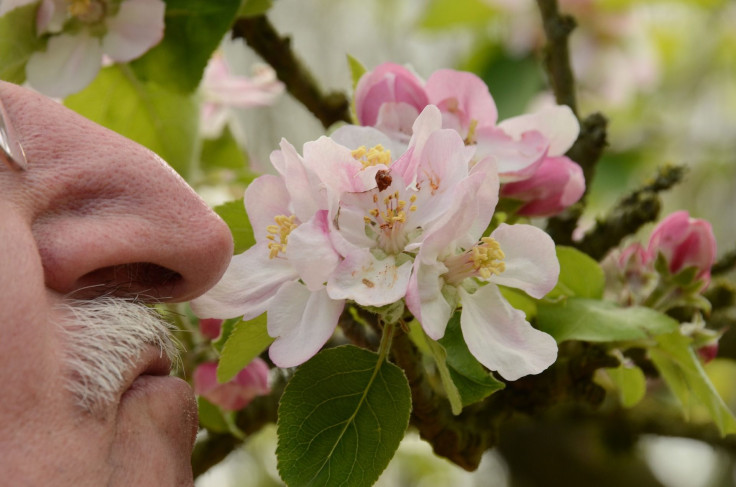4 Secret, Cool Ways Your Five Senses Work

We are so used to seeing, hearing, smelling, tasting and touching things that we often don’t even notice when our senses are doing their jobs. But they are always working, even in ways we may not have realized.
The buddy system
Our senses often pair up to make us work more efficiently. Eating that homemade apple pie would not be the same without a sense of smell or taste, for example. Scientific American notes, “To our brains, ‘taste’ is actually a fusion of a food's taste, smell and touch into a single sensation. This combination of qualities takes place because during chewing or sipping, all sensory information originates from a common location: whatever it is we're snacking on.” Smell is crucial to absorbing food’s flavor, and, in addition to sensing the meal’s texture, our taste buds could not decipher that flavor without touching it. People who have lost their sense of smell, sense researcher Beverly Cowart told NPR, notice that food doesn’t taste the same. “You can still taste the basic tastes which are sweet, salty, sour, bitter, and umami or savory,” she said. “What you're missing are the sort of subtle distinctions, the difference between strawberry and banana; between chocolate and vanilla.”
Much like touch, smell, and taste work together, sight and hearing often team up. An article published in Nature Neuroscience suggests that how people interpret sound depends on immediate visual cues. The researchers from NYU Langone Medical Center gave an example of visual context affecting how we react to sound: “People learn to respond without alarm to the honk of a car horn if heard from the safety of their homes, but are startled to hear the same honk while crossing a busy street,” neuroscientist and senior investigator Robert Froemke said in a statement from the institution. That information could prove useful, the researchers hope, in understanding mental conditions that are triggered under specific circumstances, such as a veteran with post-traumatic stress disorder who is disturbed by a car backfiring.
Another way sight and hearing have worked together has been shown when sight is impaired. Some blind people have developed an ability to use their senses like sonar, interpreting sound waves they hear and using the information to construct a visual of their surroundings. Smithsonian Magazine compared the function to that of a bat mid-flight: “It rapidly emits a series of high-pitched clicks … By following cues in the volume, direction and speed at which these sounds return, bats can effectively see in the pitch-black dark.”
Adaptation
Our senses are constantly adapting to our environment and other stimuli. In particular, our sense of touch learns not to constantly return information about the clothing we are wearing on any given day — “unless movement brings about a change in stimulation,” Encyclopaedia Britannica explains. It also gives the example of how we adapt to temperature, saying that if we were to heat one hand and freeze the other, subsequently placing them in bowls of lukewarm water would make the hot hand feel cool and the cold hand feel warm. There’s also the nose knowing how to adapt: the smell of a room begins to fade once we enter, a process that may also explain why some people cannot smell their own body odor.
You smell great
The sense of smell is tightly linked to memory, perhaps with a stronger tie than any of our other senses. The BBC explains that it is the oldest of our senses to evolve — it’s one that even lowly bacteria have. “Before sight or hearing, before even touch, creatures evolved to respond to chemicals around them.” While the other senses have a few types of receptors, smell has more than 1,000 different ones. That could be why the smell of a certain hand cream can bring back memories of being in a mother’s arms, or it could be that the smell-processing center of the brain is next door to the region that creates new memories. The BBC also notes that while visuals, sounds and textures go through intake in a brain region called the thalamus before reaching their ultimate destination, smell travels directly from the nose to its processing center.
In good taste
People taste things differently, and like different dishes, in part, because taste buds vary from person to person. The human tongue has thousands of them, but Encyclopaedia Britannica says that on the tip of the tongue, “some people may have only a few individual taste buds, whereas others may have more than one thousand; this variability contributes to differences in the taste sensations experienced by different people.” And each taste bud responds to different chemical stimuli, so “the sensation of different tastes (i.e., salty, sweet, sour, bitter, or umami) is diverse not only within a single taste bud but also throughout the surface of the tongue.”
Published by Medicaldaily.com



























